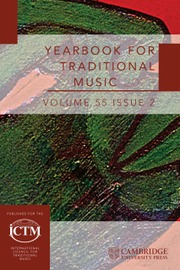No CrossRef data available.
Article contents
Between War, Politics, and “Something Nice Back Home”: Uncovering the First Mozambican Experiences within the “World Music” Market (1987–1994)
Published online by Cambridge University Press: 19 February 2024
Abstract
This article analyzes the internationalization of Mozambican music within the “World Music” market during the country’s transitional period from a single-party socialist-led system to a multiparty, liberal one (1987–1994) in relation to the country’s nation-building process. The comparative examination of three cases—Orchestra Marrabenta Star de Moçambique, the song “Baila Maria” by Grupo RM (Amoya), and Real World Records’ albums by Eyuphuro and Ghorwane—shows that the “World Music” market not only served as an escape valve from the country’s lethargic phonographic industry but also emerged as a privileged channel to promote Mozambique’s official musical policy abroad during a crucial civil war-torn period.
- Type
- Research Article
- Information
- Yearbook for Traditional Music , Volume 55 , Special Issue 2: 46th World Conference of the ICTM , December 2023 , pp. 193 - 219
- Copyright
- © The Author(s), 2024. Published by Cambridge University Press of the International Council for Traditions of Music and Dance




